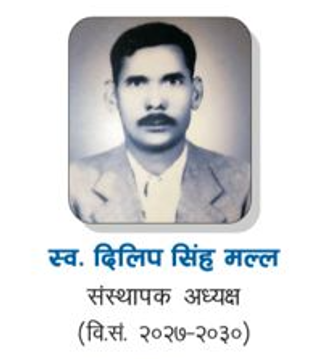
About
About US
Kailali Chamber of Commerce and Industry (KCCI) is located in Kailali District, which is the gate way to eight other district of Farwest Region of Nepal. It was established in 1970 (2027 B. S.), basically to preserve the rights and interest of business community of the district. Over the years, KCCI has become a dynamic and result-oriented forum for the socio-economic development in the region by supporting to the tourism, agriculture, trade industry and as well as extending helping hands in the sectors of infrastructure development in the region. Though KCCI is a non government and non profitable business membership organization, it has made an outstanding contribution to explore and introduce the potentialities and possibilities of Farwest to the nation and outside the nation by intervening different activities. The notable task which has been performed by the Chamber to promote agriculture, tourism, business and industry or socio-economic development of Kailali and of Farwest Region it has become one of the most influential and respected CCI in the country. Kailali Chamber of Commerce is a "A" class Chamber in Nepal.
कैलाली उद्योग वाणिज्य संघ (केसीसीआई) कैलाली जिल्लामा अवस्थित छ, जुन नेपालको सुदूर पश्चिम क्षेत्रका अन्य आठ जिल्लाहरूको प्रवेशद्वार हो। वि.सं. १९७० (वि.सं. २०२७) मा स्थापना भएको यस जिल्लाको व्यापारिक समुदायको हकहितको संरक्षण गर्ने उद्देश्यले स्थापना गरिएको हो । वर्षौंदेखि, केसीसीआई पर्यटन, कृषि, व्यापार उद्योगलाई समर्थन गर्दै र यस क्षेत्रको पूर्वाधार विकासको क्षेत्रमा सहयोगको हात विस्तार गरेर यस क्षेत्रको सामाजिक-आर्थिक विकासको लागि एक गतिशील र परिणाम-उन्मुख मञ्च बनेको छ। यद्यपि केसीसीआई एक गैर-सरकारी र गैर-लाभकारी व्यावसायिक सदस्यता संगठन हो, यसले विभिन्न गतिविधिहरूमा हस्तक्षेप गरेर देश र देश बाहिर फारवेस्टको सम्भावना र सम्भावनाहरूको अन्वेषण र परिचय गर्न उल्लेखनीय योगदान पुर् याएको छ। कैलाली र सुदूरपश्चिमको कृषि, पर्यटन, व्यवसाय र उद्योग वा सामाजिक–आर्थिक विकासका लागि चेम्बरले गर्दै आएको उल्लेखनीय कार्य मुलुककै सबैभन्दा प्रभावशाली र सम्मानित सीसीआई मध्येको एक बनेको छ । कैलाली चेम्बर अफ कमर्श नेपालको 'क' वर्गको चेम्बर हो ।
Province Profile
Geography
Kailali District (Nepali: कैलाली जिल्ला), a part of Sudurpashchim Province in Terai plain, is one of the 77 districts of Nepal.
The district, with Dhangadhi as its district headquarters, covers an area of 3,235 square kilometres (1,249 sq mi) and has a population of 911,155 (2021 census)
and (775,709 in 2011 census), (616,697 in 2001 census). The region can be categorized into three distinct climate zones based on elevation.
The Lower Tropical zone encompasses areas below 300 meters (1,000 feet) and constitutes approximately 59.3% of the total area.
The Upper Tropical zone includes elevations ranging from 300 to 1,000 meters (1,000 to 3,300 feet) and covers 25.9% of the area.
Lastly, the Subtropical zone, found at elevations between 1,000 and 2,000 meters (3,300 to 6,600 feet), accounts for 13.8% of the area.
CLIMATE
Kailali Climate Summary Located at an elevation of 600.95 meters (1971.62 feet) above sea level, Kailali has a Subartic, dry winter, cool summer climate (Classification: Dwc).
The district’s yearly temperature is 21.52ºC (70.74ºF) and it is -0.48% lower than Nepal’s averages.
SOCIAL AND CULTURAL DIVERSITY
Kailali is a district marked by significant social and cultural diversity. The Tharu community constitutes about 40% of the population, followed by Brahmins and Chhetris at 30%, and Dalits at 15%, with other ethnic groups like Magars making up the remaining 15%. Nepali is the predominant language, spoken by around 60% of the people, while 30% speak Tharu and 10% speak other regional languages like Doteli. The district is predominantly Hindu, with 85% of the population practicing the religion, while Buddhism, Christianity, and other religions account for the remaining 15%. Festivals like Dashain and Tihar are widely celebrated by 85% of the population, while Tharu-specific festivals like Maghi and Holi are observed by around 40%, reflecting the district's vibrant cultural fabric.
ECONOMY
Kailali's economy is primarily agricultural, with major crops like rice, wheat, and sugarcane. The district also has a growing industrial sector, focusing on small-scale manufacturing and trade, particularly with India due to its border proximity. Livestock, forestry, and fisheries play significant roles as well. The service sector, including education and healthcare, is expanding alongside rising urbanization.
Meet Executive Committee Member


Puskar Raj Ojha
Senior Vice President

Dinesh Lamsal
Vice President (Industry)

Keshavraj Joshi
Vice President (Commerce)

Manoj Agrawal
Vice President (Associate)

Laxmanraj Panta
Vice President (Commodity Association):

Om Bahadur Bista
General Secretary

Bhimraj Ojha
Treasurer

Suresh Pandey
Secretary

Tilak Bahadur Bohara
Member

Kavindra Panta
Member

Ravi Kunwar
Member

Ambika Bhandari
Member

Kopila Kunwar
Member

Lokraj Bhatta
Member

Prakash Kumar Chand
Member

Rupesh Khadka
Member

Shyamraj Joshi
Member

Radhika Kumari Chaudhary
Member

Milan Kunwar
Member

Shambhu Lamichhane
Member

Surendra Bahadur Kadayat
Member

Vasudev Bhatta
Member

Krishna Bista
Member

Surendra Kumar Bohara
Member

Rita Joshi
Member

Kamala Bhattarai
Member

Puja Kunwar
Member

Tek Bahadur Khadka
Member

Dipendra Bhatta
Member
Meet Executive Alumni Committee Member










